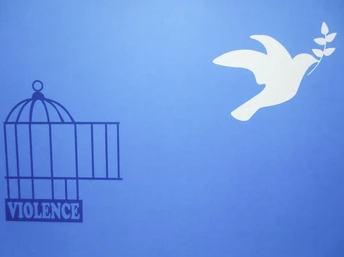- Game Design and Work examples -

My Focus
While I love the obscure and unknown in horror, I strive for sharp, clear and distinct documents and believe that complexity can only derive from simplicity.
As a designer, I focus on elegant, modular, easy to understand and cooperative work. My genre focus lies on horror and immersive sim games, which I prefer to combine with non-violent game mechanics.
(See my thesis on the bottom for more on non-violent game design)

My Work Ethos
Game Development is a team effort, as is Game Design. It's my belief that every team member should be heard and have a feeling of ownership.
That is why I'm always open to feedback. Good Game Design depends on it.
It is not my job to insist on my design, but to make my team believe in our design. My documents are collaborative and as short as possible, because I value the time of my colleagues.

Non Violent Game Mechanics
Violence in games is overused. And often it is chosen as the most easy and feasable solution. As described in my thesis, I believe there is a huge amount of innovation hidden behind the vail of violence as game mechanics.Current aproaches in latest games excite me very much. I want to explore it as well!
The Task:
The task was to design a new room, with several objects, define major progression anchors, as well as connect new mechanics to exsisting ones and introduce new opportunities for narritive additions.General Overview
I transfered my paper prototype to Milanote and gave a broad overview over the idea and the content.
I also provivded first information on the different possibilities to encounter this room, as well as general level design explainations.
The Tool
The star of the show: the new tool, players can encounter in this room.
Since the other tools were unknown to me, I tried to offer something modular , which can work in interesting ways, maybe even appart from applying it other tools.
In the idea, it is possible to even manipulate bigger systems, like space ships thrusters.
The Room
These are the actual objects the players can manipulate.
I chose this double room layout to teach players about hidden places in their ship and to awake some kind of mystery.
I made sure to give enough hints , that something in this room feels off, like the lamp cables or the hidden mousehole.
Items
I listed the items the player can encounter and their use.
It was important to me to have a roughly even distribution, with rarer / story relevant items in the hidden room.
Yet, I knew I had to keep the items in a way that still allowed players to continue the game, without ever finding this room.
Narrative
Lastly, I was tasked to come up with narrative anchors which can be used to reward the players, as well as progression for the overall game.
I also tried to make sure these memories are linked to different areas in the game to give an organic feel, since I didn't want my new room to feel all too seperated.




